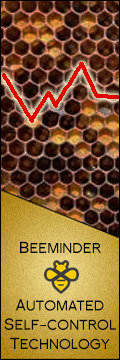Three years ago, in Going Loopy, I wrote:
If the brain had been designed by an amateur, it would enter a runaway feedback loop the first time it felt an emotion. Think about it. You see a butterfly. This makes you happy. Being happy is an unexpected pleasant surprise. Now you’re happy that you’re happy. This makes you extra happy. Being extra happy is awesome! This makes you extra extra happy. And so on to as much bliss as your neurons are capable of representing. In the real world, either those feedback loops usually don’t happen, or they converge and stop at some finite point. I would not be surprised to learn that a lot of evolutionary innovation and biochemical complexity goes into creating a strong barrier against conditioning on your own internal experience.
“Evolutionary innovation and biochemical complexity”? Haha no, people are just too distractable to keep having the same emotion for more than a couple seconds.
I get this from Leigh Brasington’s excellent Right Concentration, a Buddhist perspective on various advanced meditative states called jhanas. To get to the first of these jhanas (there are eight in all), you become really good at concentration meditation, until you can concentrate on your breath a long time without getting distracted. Then you concentrate on your breath for a long time. Then you take your one-pointed ultra-concentrated mind, and you notice (or generate, or imagine) a pleasant feeling. This produces the first jhana, which the Buddhist scriptures describe as:
One drenches, steeps, saturates, and suffuses one’s body with the rapture and happiness born of seclusion, so that there is no part of one’s body that is not suffused by rapture and happiness.
Brasington backs this up with his own experience and those of other meditators he knows. The first jhana is really, really, really pleasurable; when you hear meditators talk about achieving “bliss states”, it’s probably something like the first jhana.
And here’s the book’s description of why it happens:
When access concentration is firmly established, then you shift your attention from the breath (or whatever your meditation object is) to a pleasant sensation. You put your attention on that sensation, and maintain your attention on that sensation, and do nothing else…
What you are attempting to do is set up a positive feedback loop. An example of a positive feedback loop is that awful noise a speaker will make if a microphone is held too close to it. What’s happening is that the ambient noise in the room goes into the microphone, is amplified by the amplifier, and comes out the speaker louder. It then reenters the microphone, gets amplified even more, comes out louder still, goes into the microphone yet again, and so on. You are trying to do exactly the same thing, except, rather than a positive feedback loop of noise, you are attempting to generate a positive feedback loop of pleasure. You hold your attention on a pleasant sensation. That feels nice, adding a bit more pleasure to your overall experience. That addition is also pleasurable, adding more pleasure, and so on, until, instead of getting a horrible noise, you get an explosion of pleasure.
The book doesn’t come out and say that the other seven jhanas are the same thing, but that seems consistent with the descriptions. For example, the fourth jhana is a state of ultimate calm. Seems like maybe if you become calm, then being so calm is kind of calming, and that’s even more calming, and so on until you’ve maxed out your mental calmness-meter.
And the explanation of why this doesn’t happen all the time is that non-meditators just can’t concentrate hard enough. A microphone-amp system that turns on and off a couple of times each second will never get a really good feedback loop going. A mind that’s always flitting from one thing to another can’t build up enough self-referentiality to reach infinite bliss.
















